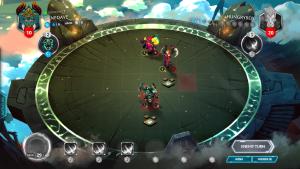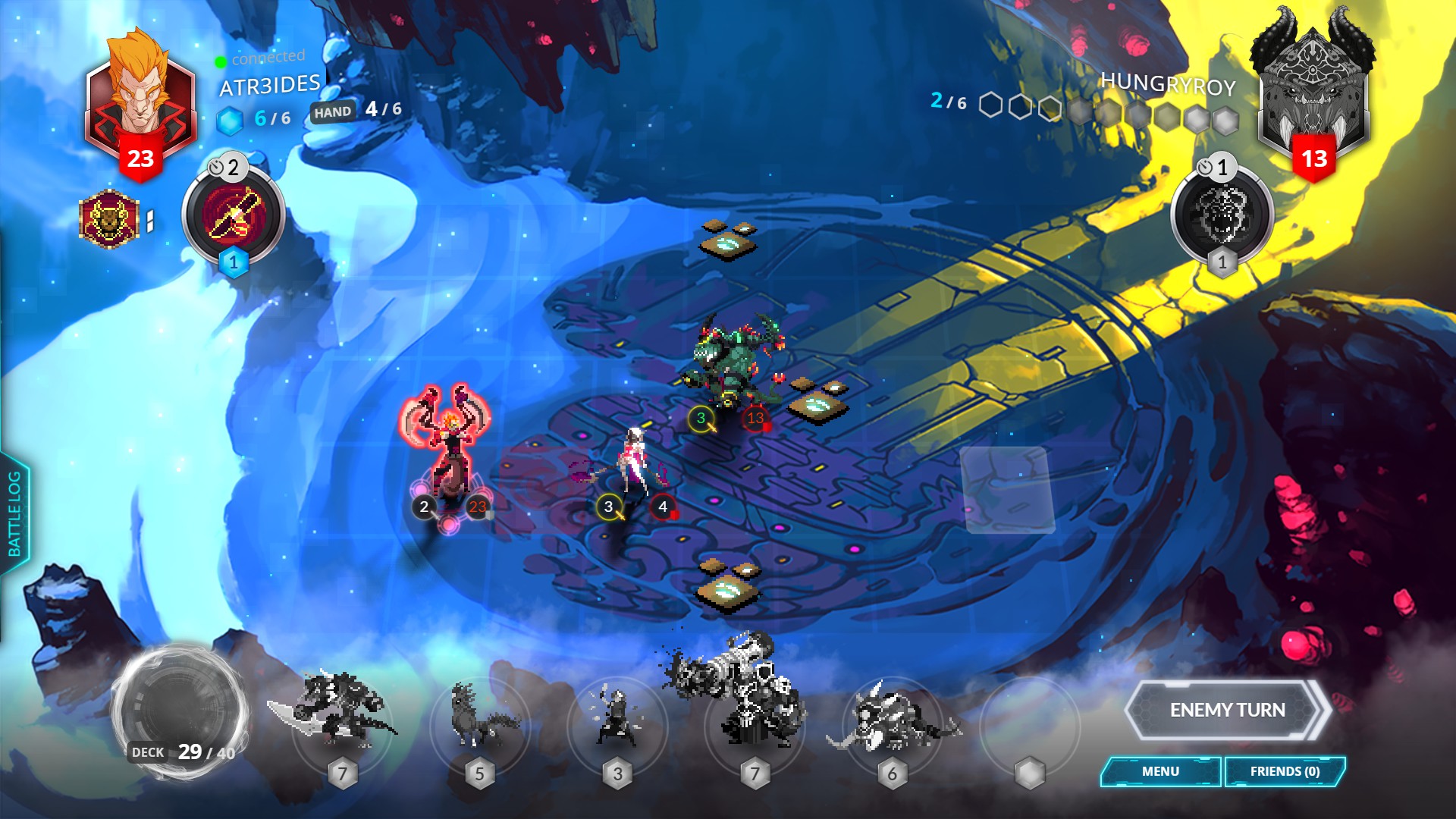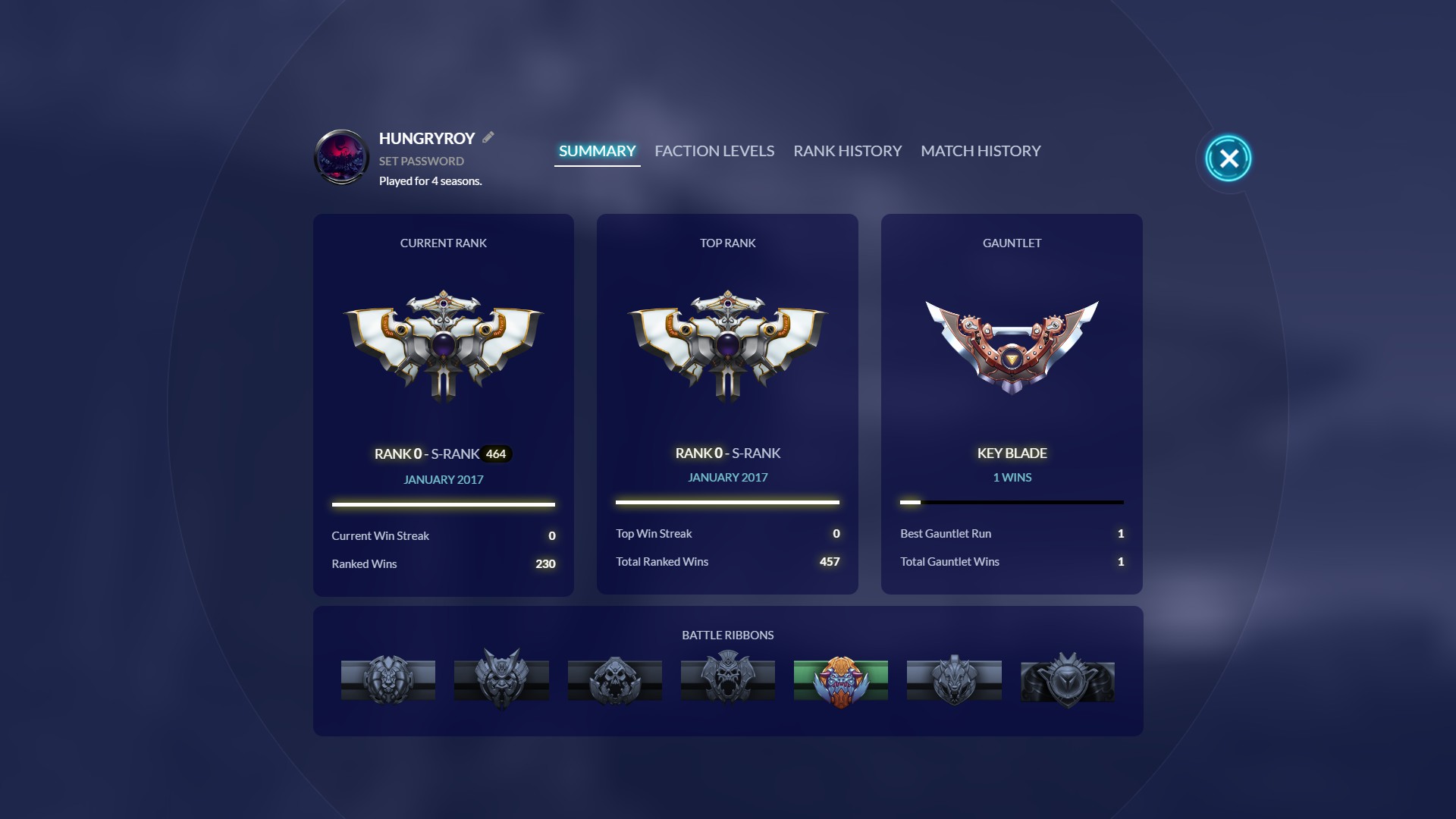After Hearthstone, I tried out a couple of other digital CCGs: Spellweaver and Eternal, but neither one hooked me. The one I enjoyed the most and did pick up to play regularly was Duelyst. So this review is written from the perspective of someone who has played both Magic the Gathering (MTG) and Hearthstone (HS).
Hearthstone, Spellweaver and Eternal played like digital MTG with some advantages, as I outlined in the HS post linked above. Duelyst keeps many of the same elements and advantages, but adds an extra dimension. Besides being a card game, Duelyst is also a board game.

Board game
In a game of Duelyst your General (the analogue to Hearthstone’s hero) and his minions are played into a 9×5 board. Minions can only be summoned on empty spaces adjacent to one of your units. During your turn, each unit can either: attack an adjacent enemy; or move up to two spaces, then attack an adjacent enemy.
Having a board and unit movement greatly enhances the “positioning matters” mechanic as compared to Hearthstone. In HS, it only mattered whether minions were adjacent, to the left or to the right. In Duelyst, you can position minions to prevent enemies from reaching your General, or to restrict enemies from moving completely.
That means a number of spells and abilities care about positioning too. Each of the available Generals has a Bloodborn spell (BBS), the equivalent of Hearthstone’s Hero Power. One of the Generals has a BBS which allows her to deal damage to all enemy units in the same column as the opposing General. This means you have to be careful where you place your minions whenever her BBS is active! There are spells that affect a small area (2×2 or 3×3 and so on). There are spells that care about adjacency (“Destroy target minion that is not nearby any general”). And so on.
Factions and Generals
Hearthstone has different heroes, and each hero has a different card pool available. By contrast, Duelyst has factions and Generals. Each faction has its own card pool, and of course there is a global or “neutral” card pool as well. Each faction also has two Generals, each of which has a different BBS. The factions and Generals encourage a lot of different playstyles.

Some factions like the Songhai are more focused on spell-based damage and backstabs. The Lyonar focus on cheap, efficient creatures. Vetruvian has obelisks that can generate temporary minions. Abyssian focuses on swarm tactics and shadow creep. The Vanar rely on placement and trickery. My favorite General, the Magmar Vaath, likes to go toe-to-toe with the enemy General and punch him in the face!
Keywords
As expected, many of Duelyst keywords care about positioning, and thus have no meaningful equivalent in either MTG or HS. Namely:
- Airdrop – minions with Airdrop can be summoned anywhere on the board
- Backstab – this unit deals extra damage when attacking from behind (yes, even facing matters!) and doesn’t receive a counterattack
- Blast – attack hits all enemies in the same row or column
- Flying – may move anywhere on the battlefield
- Frenzy – normal attacks hit ALL adjacent enemies
- Infiltrate – gains bonus effect if its on the enemy’s starting side of the board
- **Provoke **– somewhat like HS’s Taunt. Adjacent enemies cannot move and must attack a Provoke unit if there is one nearby
- Ranged – can attack from anywhere on the board
- Shadow Creep – this is a modifier that can be added to board tiles. An enemy standing on Shadow Creep takes 1 damage at the end of the Shadow Creep owner’s turn
- **Zeal **– gains bonus effect as long as it’s next to the General
Duelyst also has a number of keywords that are analogous to abilities in MTG and HS. Rush is the same as MTG’s **Haste **and HS’s Charge. **Opening Gambit **and Dying Wish are the same as HS’s Battlecry and **Deathrattle. **(I worry that at some point new cardgames will run out of names for “enters the field” and “leaves the field”.) And so on – no need to cover everything here.
Skill Level, Competitive Play and F2P
The added dimension of positioning means that Duelyst is strictly more skill-based than HS. This is obvious if you note that there are a lot more choices for where to place minions. Hearthstone is also more reliant on RNG than Duelyst is, although I can’t say that will hold for the future. I enjoy some level of RNG as it creates variance, but the randomness means a higher chance of losing due to bad luck.
I find competitive play on the ranked ladders for both Duelyst and Hearthstone to be about the same. I’m not saying either meta is healthy, but as I see it there are more viable decks in Duelyst ladder as compared to HS.
Since I’ve already spent a bunch of money in MTG, I don’t like spending money on digital card games. So for both HS and Duelyst, I am strictly free-to-play (F2P). Both games offer similar monetization models (pay money for booster packs/cosmetics) but I was able to get further up the ladder in competitive Duelyst.

In my first full month (December), I was already able to get to Duelyst’s Gold Division. This should be similar to around rank 10 in HS. After a lot (and I mean a lot) of grinding from Diamond rank, I managed to hit the S-Rank Division last month. This is the equivalent of HS’s Legend rank. The highest rank I ever got in HS was around rank 6 or 7.
If I think Duelyst is more skill-based than HS, why did I find it easier to get to S-Rank than HS’s Legend rank? Two reasons come to mind:
- I found Duelyst games more fun. This means I was playing Duelyst on a daily basis since it started. At the start, I played regularly because I wanted to get Steam Achievement completion. But I found myself enjoying the game and continuing to play even after that. There are also a lot more variance in decks being played on the Duelyst ladder. By comparison, HS ladder seemed to be almost 50% the one best deck (used to be Midrange Shaman, nowadays Pirate Aggro… ) while the other 50% are trying to beat it.
- It was easier to get the powerful cards and build the tier one decks in Duelyst. The pricing of packs is about the same (100 gold), but on average I could earn around 100-150 gold per day from Duelyst’s quests, compared to 40-60 for HS. The drop rates for Legendaries (highest rarity in both games) is higher in Duelyst as well. Unlike HS, Legendaries in Duelyst are not restricted to one per deck, you can play as many as three. This meant you need more of them, which annoyed me at first. But I think that’s counterbalanced by the higher drop rate. For comparison, I’ve been playing HS for more than a year and have only gotten two premium (golden) Legendaries. Three months into Duelyst and I’ve opened the same amount of premium (prismatic) Legendaries. (Well, this comparison may be skewed since I open more Duelyst packs due to the increased gold rate.) Another factor was the Bloodborn expansion, which you could complete by playing enough to grind 3900 gold. That expansion came out in December, and I completed the set early in January. This set gave me access to many useful cards that were important in the meta. This allowed me to build a tier one deck and reach S-Rank in January. Even after that deck was nerfed, I was also easily able to shift to another tier one deck from another faction. In HS, I still haven’t found a new competitive deck after Midrange Shaman.
The Future
At first I told myself I would stop playing Duelyst after I completed the Steam Achievements. Then I said I would stop playing after I got to S-Rank. But I’m still playing it now. By comparison, I now launch HS once or twice a week, and I don’t clear the quests.
Duelyst is still a young game – the second expansion just came out last December. So in the future it may yet be plagued with the problems Hearthstone currently has. The developers have shown themselves to be responsive in nerfing problematic cards and shaking up the meta though. Whether they are able to keep this up remains to be seen. In the meantime, I’m willing to keep playing as long as the game is still enjoyable.




See Also